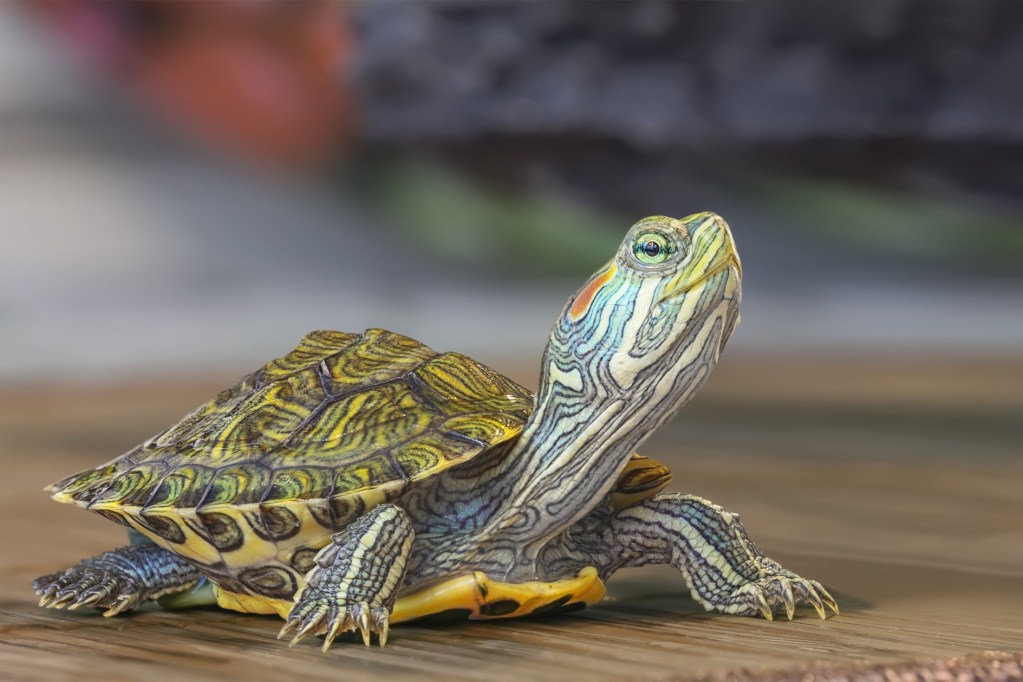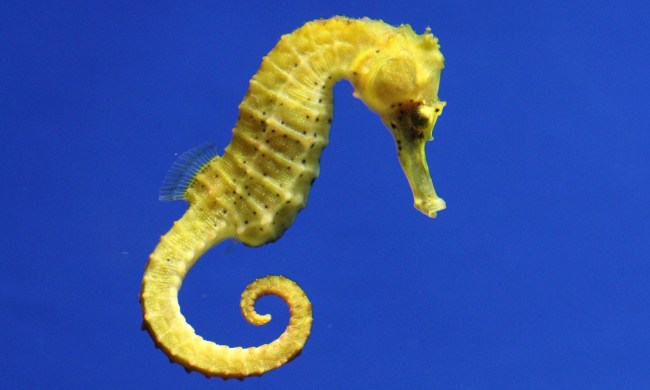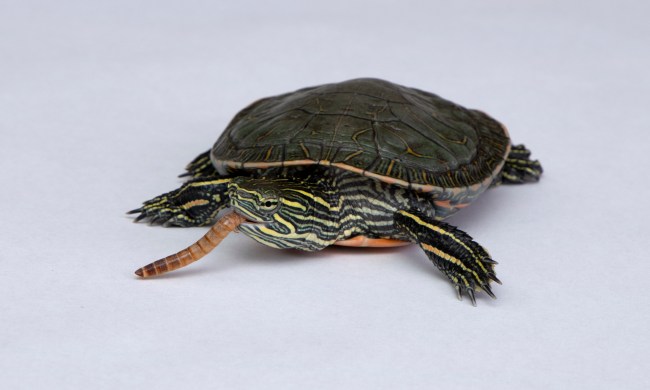Turtles and tortoises make wonderful pets for families who want something more unexpected than a puppy or kitten. Naturally, each one requires different food, habitats, and care routines. Furthermore, between each species, there are varying breeds that may call for unique attention. If you’re contemplating turtle versus tortoise in your home, here are some ways to choose which one might make more sense.

Turtle vs. tortoise: Habitat
Like a dog needs a crate or their own bed, turtles and tortoises need their own space.
- Turtle: Turtles have distinct, webbed feet. This means they’re made to swim and, therefore, live in water. Nevertheless, they also need a dry-ish, warm place to bask in. A properly installed UV light gives them the sunlight they need every day.
You’ll need a water tank that’s at least 40 gallons, though a larger one is ideal if you’re planning on fostering a pair or a large breed. You’ll also need to install an efficient water filter to keep their living conditions clean and prevent any common waterborne diseases. Without a water filter, you will need to change the water daily. - Tortoise: Tortoises have thick, flat feet. This means they’re made to walk on land, so a terrarium is their most practical habitat. Your tank needs to be at least 40 gallons with space on one side for basking in UV light and another side that’s cooler.
Depending on your tortoise breed, you’ll need different bedding like plant fiber, sand, or bark. They’ll need a structure to hang out in and hole up under.
What are their size differences?
Size is an important factor, particularly if you live in an apartment or a compact home.
- Turtle: Pet turtle breeds are typically smaller than tortoises. They grow to about 5 to 10 inches long during adulthood, making them easy to care for. Common pet species include the mud turtle, red-eared slider, and the painted turtle. According to vets and pet owners, as a rule of thumb, for every inch of a turtle’s shell you need 10 gallons of tank space. For instance, a turtle with a 5-inch shell would require a 50-gallon tank. This might be a good way to narrow down your choice if you’re short on space.
- Tortoise: On average, tortoises grow larger than turtles. Common pet tortoise breeds grow an average of 10 to 15 inches long. Note that tortoises also tend to be heavier since they have large, domed shells. Since tortoises are larger, they’ll also need more space to roam and live.
What food do they eat?
Both turtles and tortoises might need additional vitamin A supplements, though a balanced diet should suffice. Consult a veterinarian if you suspect your pet needs extra vitamins.
- Turtle: Turtles are omnivores and eat fruits, vegetables, small insects, and even meat. The exact diet depends on your turtle’s species, but many pet stores carry turtle-specific food if you want to give them no-prep food. Since turtles will most likely drink the same water they swim in, changing their water or your filter regularly is important.
- Tortoise: Tortoises are herbivores and will eat anything from bell peppers to oranges. However, keep the vegetable to fruit ratio roughly 80/20. You may also feed your tortoise hay, depending on their species. Place a dish or bowl where they hang out so they can have access to water at all times.
What is their lifespan?
One of the biggest concerns with pet turtles and tortoises is their long lifespans. We’re talking at least 20 years up to 50 years or more! If you’re looking for a lifetime companion, then a tortoise might be best.
- Turtle: Pet turtles, on average, live up to 20 years, give or take 10 years. Some species like the Eastern box turtle and the wood turtle can live up to 50 years or more, though. If you want a pet with an average dog breed’s lifespan, consider a map turtle, which lives for about 15 to 20 years.
- Tortoise: Get this — 50 years is the low end of the spectrum for pet tortoises! Considering that some tortoise species live up to 200 years, a 50-year lifespan for a pet tortoise almost seems short. Expect to care for your tortoise for decades, and plan to leave them in someone’s trustworthy care in case you move and can no longer care for it.
When you welcome a pet into your home, you should be fully prepared and committed. Turtles and tortoises are amazing creatures that will be a part of your family for decades. If your household is under a turtle vs. tortoise debate right now, it’s good to think about their habitat, sizes, diets, and even lifespans. We hope this article ends your stalemate, and good luck!



